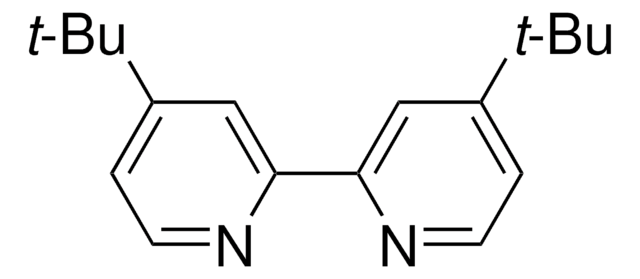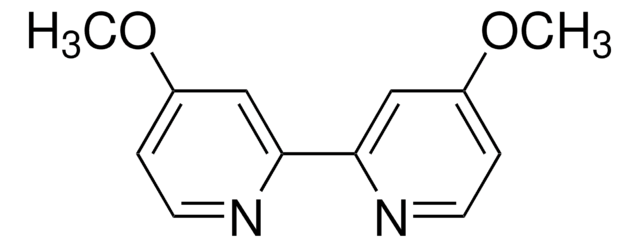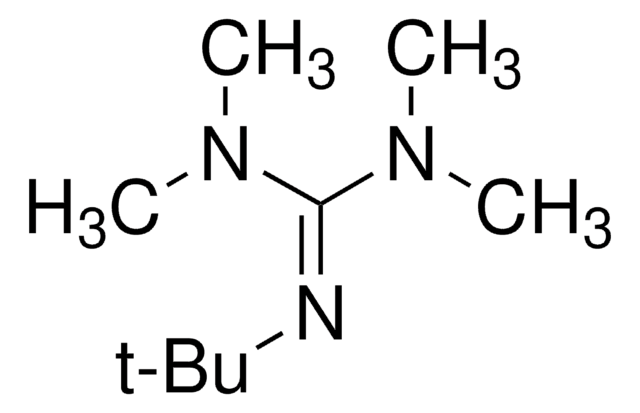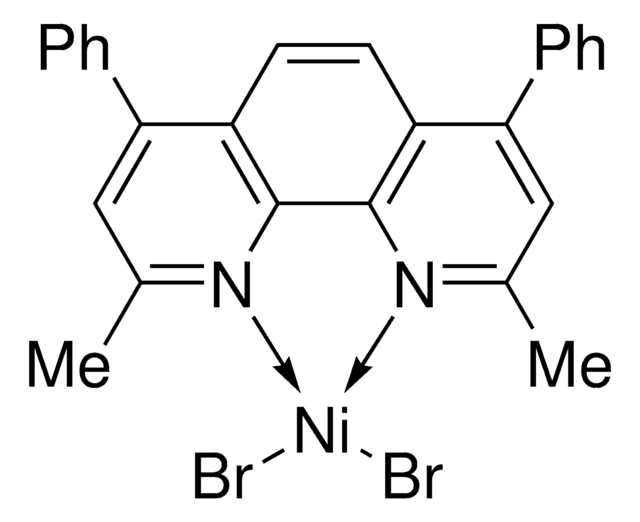About This Item
推荐产品
品質等級
化驗
97%
形狀
powder
反應適用性
reagent type: catalyst
core: nickel
SMILES 字串
Br[Ni]Br.COCCOC
InChI
1S/C4H10O2.2BrH.Ni/c1-5-3-4-6-2;;;/h3-4H2,1-2H3;2*1H;/q;;;+2/p-2
InChI 密鑰
VHSVJTYBTJCDFL-UHFFFAOYSA-L
一般說明
應用
- The selective transformation of ethylene into higher-order products.
- The vinyl polymerization of norbornene.
- The preparation of poly(3-hexylthiophene) (P3HT) Kumada catalyst transfer polymerization. It facilitates good control over the molecular weight of the conjugating polymer.
訊號詞
Danger
危險分類
Acute Tox. 4 Inhalation - Aquatic Acute 1 - Aquatic Chronic 1 - Carc. 2 Inhalation - Flam. Sol. 1 - Muta. 2 - Repr. 2 - Resp. Sens. 1 - Skin Sens. 1 - STOT RE 1 Inhalation
標靶器官
Respiratory Tract,Skin
儲存類別代碼
4.1B - Flammable solid hazardous materials
水污染物質分類(WGK)
WGK 3
閃點(°F)
26.6 °F - Non-equilibrium method
閃點(°C)
-3 °C - Non-equilibrium method
個人防護裝備
dust mask type N95 (US), Eyeshields, Gloves, type P3 (EN 143) respirator cartridges
其他客户在看
商品
Plasmonic nanoparticles have unique optical properties that can be tailored to suit a variety of applications in the biotechnology1–8 and electronics9–16 industries.
我们的科学家团队拥有各种研究领域经验,包括生命科学、材料科学、化学合成、色谱、分析及许多其他领域.
联系技术服务部门

![(Ir[dF(CF3)ppy]2(dtbpy))PF6](/deepweb/assets/sigmaaldrich/product/structures/982/913/02dd8ddd-6deb-40a0-ab9b-07b18f1abb09/640/02dd8ddd-6deb-40a0-ab9b-07b18f1abb09.png)
![[4,4′-双(1,1-二甲基乙基)-2,2′-联吡啶]二氯化镍(II)](/deepweb/assets/sigmaaldrich/product/structures/471/091/6faa29b1-bf8a-4d87-90b2-4cc55e082620/640/6faa29b1-bf8a-4d87-90b2-4cc55e082620.png)













![[(TMEDA)Ni(o-甲苯基)Cl] 95%](/deepweb/assets/sigmaaldrich/product/structures/236/439/768c916e-994f-47e3-a980-3ca0471317d7/640/768c916e-994f-47e3-a980-3ca0471317d7.png)

